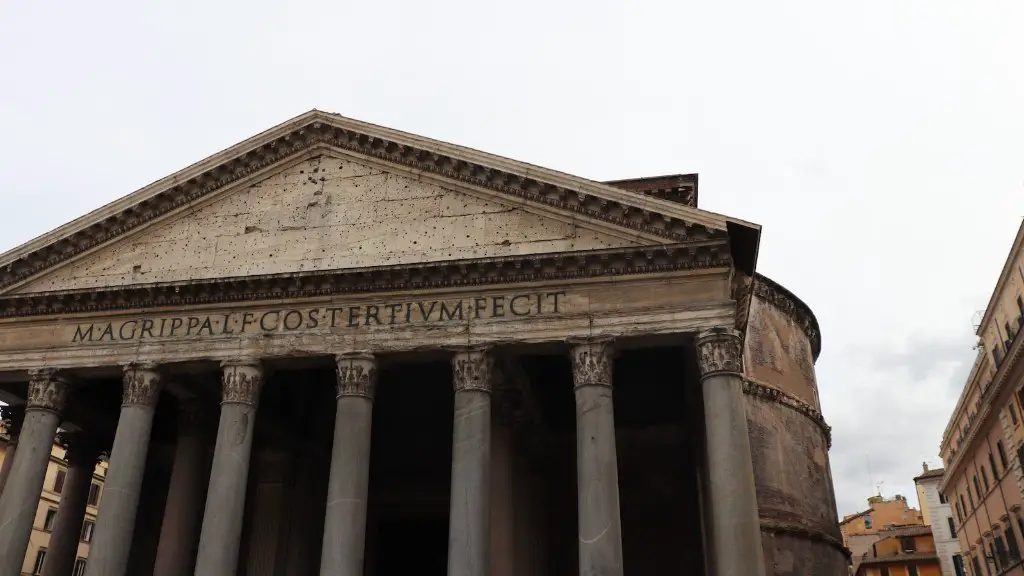In 476 AD, the last Roman emperor was overthrown by the Germanic leader Odoacer. This signaled the end of the Roman Empire, which had been in decline for several centuries. The Roman Empire was characterized by political instability, economic problems, and barbarian invasions. The fall of the Roman Empire ushered in a new era in European history.
The Roman Empire fell in 476 AD. The last Roman emperor, Romulus Augustus, was overthrown by the Germanic chieftain Odoacer. This ended the period of the Roman Empire.
What happened in year 476 AD?
In 476, the Germanic leader Odoacer staged a revolt and deposed Emperor Romulus Augustulus. From then on, no Roman emperor would ever again rule from a post in Italy, leading many to cite 476 as the year the Western Empire suffered its death blow.
Romulus Augustulus was the last emperor of the Western Roman Empire, ruling from 475 to 476. A member of the Flavian dynasty, he was the son of Orestes and the last emperor to be recognized by the Eastern Roman Empire. He was deposed in 476 by the Germanic chieftain Odoacer.
Was 476 AD truly the end of the Roman Empire
There is no clear consensus on when the Roman empire ended. Some historians give AD 476 as the date, while others claim that it never actually ended at all. The latter group argues that the empire’s eastern half continued in the form of the Byzantine empire. Ultimately, it is up to the individual to decide which interpretation they believe is most accurate.
1. Invasions by Barbarian tribes: The Roman Empire was constantly under attack by barbarian tribes, which led to its eventual downfall.
2. Economic troubles and overreliance on slave labor: The Roman economy was in trouble due to its overreliance on slave labor, which made it unable to compete with the more efficient economies of the barbarian tribes.
3. The rise of the Eastern Empire in the late third century: The Eastern Empire rose to prominence in the late third century, which led to the decline of the Western Roman Empire.
4. Overexpansion and military overspending: The Roman Empire overexpanded its territory and military, which led to its financial ruin.
5. Government corruption and political instability: The Roman government was corrupt and unstable, which led to the decline of the empire.
6. The arrival of the Huns and the migration of the Barbarian tribes: The arrival of the Huns and the migration of the barbarian tribes led to the fall of the Roman Empire.
7. Christianity: Christianity played a role in the decline of the Roman Empire, as it undermined the traditional values of the empire.
8. The fall of the Western Roman Empire: The
Why is the year 476 AD famous?
The fall of Rome in 476 was the end of the Western Roman Empire. The Eastern Roman Empire, which was richer and stronger, continued as the Byzantine Empire through the European Middle Ages.
The fall of the Western Roman Empire in 476 is often considered the end of ancient history and the beginning of the Middle Ages in Europe. This event marked a major turning point in European history, leading to centuries of change and transformation.
What was Rome like after 476?
Romanitas was the way of life of the Roman Empire and denotes the empire’s distinctive culture, which included aspects of Roman law, administration, architecture, and language. The Germanic tribes that conquered the Western Roman Empire in 476 CE adopted many of these Roman cultural aspects, helping to shape the medieval world.
The Dark Ages refer to the time period after the fall of the Western Roman Empire. This time period is called the Dark Ages because there was a supposed decline in culture and science. However, there is little written documentation from this period to prove otherwise.
When was the Dark Ages
The role of communication in our daily lives is vital. In fact, we use communication every day to interact with others. Whether we are communicating with our family, friends, or co-workers, we are constantly sending and receiving messages. And, in order to be effective communicators, it is important that we understand the different ways to communicate.
There are two main types of communication: verbal and nonverbal. Verbal communication involves using words to share a message, while nonverbal communication involves using body language, gestures, and facial expressions to communicate. Both types of communication are important in order to effectively share a message.
It is important to remember that communication is a two-way process. That means that we not only need to be clear in our own communication, but we also need to be good listeners. Listening is an important skill that is often underrated. In order to be a good communicator, we need to be able to listen to others and understand their message.
Overall, communication is a vital part of our lives. It is something that we use every day, and it is important to be aware of the different ways to communicate effectively.
The western Roman Empire officially ended in 476 AD, though Rome itself continued to decline in the centuries after. Many factors led to the fall of the empire, including economic decline, military weakness, and political instability. The end of the western Roman Empire was a watershed moment in history, marking the end of one of the great civilizations of the ancient world.
Did Rome fall in 476 or 1453?
In 476, the Western Roman Empire fell. The Byzantine Empire, which was the other half of the Roman Empire, survived until 1453. The decline of Constantinople, now called Istanbul, marked the end of the Byzantine Empire.
The final blow to the Roman Empire came in 476 when the last Roman emperor, Romulus Augustus, was forced to abdicate and the Germanic general Odoacer took control of the city Italy. This event eventually led to the Ostrogoth kingdom becoming a Germanic kingdom.
What are the 2 main reasons Rome fell
The Roman Empire was one of the most powerful empires in the world for centuries. But eventually, the empire began to crumble from within. One of the primary reasons for this was the lack of loyalty from the military. The Roman army was notoriously loyal to the empire, and they were the backbone of the empire’s power. But over time, this loyalty began to wane. The soldiers were not being paid well, and they were often sent into battle without adequate support. This led to a growing sense of dissatisfaction among the ranks, and eventually, this dissatisfaction turned into open rebellion.
Another reason for the fall of the Roman Empire was the growing distrust of the government among the people. The government was incredibly corrupt, and the emperor was often more concerned with his own power than with the welfare of the people. This led to a growing resentment of the government, which eventually boiled over into open rebellion.
These are just two of the many reasons why the Roman Empire fell. But it’s clear that the lack of loyalty from the military and the distrust of the government were two of the primary factors in the empire’s decline.
The senators’ action in stabbing Caesar 23 times was motivated by their fear that his concentrated power during his dictatorship was eroding the Roman Republic. They claimed to be acting in the interests of tyrranicide, or the killing of a tyrant for the good of the people.
What are the 3 main reasons Rome fell?
The Roman Empire was one of the largest empires in history. At its height, it encompassed most of Europe, North Africa, and the Middle East. However, it ultimately fell due to a number of factors.
One of the main reasons for the decline of the Roman Empire was political instability. There was a constant struggle for power between different factions within the empire. This led to civil wars and ultimately the weakening of the empire.
Another reason for the decline of Rome was economic and social problems. The economy of the empire was not able to keep up with the demands of the growing population. This led to inflation and unemployment. Additionally, there was a growing divide between the rich and the poor.
Finally, a weakening of the frontier or border was another factor in the decline of Rome. The empire was simply too large to be defended effectively. This allowed invasions by barbarian tribes, which further weakened the empire.
The end of the classical period in the West is typically marked by the fall of the Western Roman Empire in 476 AD. This event ushered in the Middle Ages, a period characterized by the rise of Germanic peoples in the former Western Roman Empire. These peoples established their own kingdoms and empires, which led to a period of great political and social upheaval in Western Europe.
Warp Up
The last Roman emperor, Romulus Augustus, was overthrown by the Germanic chieftain Odoacer. This event marks the end of the Western Roman Empire.
In 476 AD, the last Roman emperor was overthrown by a Germanic general, Odoacer. This event marks the end of the Western Roman Empire, which had been in decline for several centuries. The Eastern Roman Empire would survive for another millennium, but the west would never again rise to power. 476 AD is thus a significant turning point in world history.





